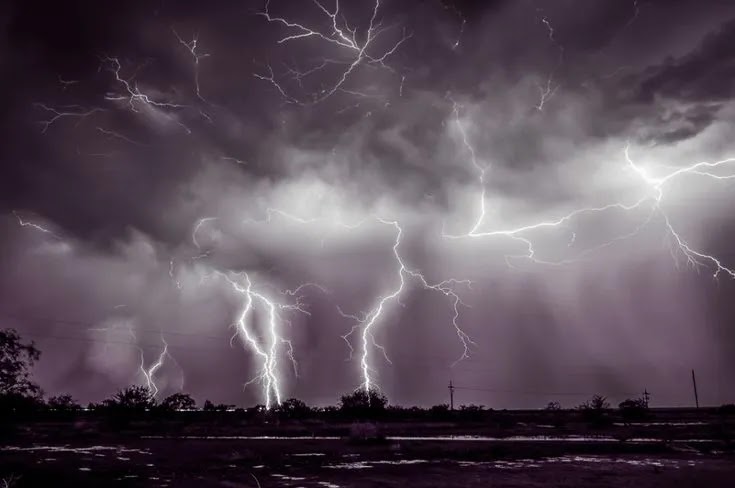Typhoon Dusuri: Unleashing Nature's Fury
Typhoon Dusuri: Unleashing Nature's Fury
Introduction:
Typhoons are powerful tropical cyclones that can wreak havoc when they make landfall. One such devastating natural phenomenon was Typhoon Dusuri. In this article, we will delve into the origins, impact, and aftermath of Typhoon Dusuri, shedding light on the destructive power of nature and the resilience of affected communities.
Understanding Typhoons
Typhoons are cyclonic storms that originate in the western Pacific Ocean, mainly between May and November. They are characterized by strong winds, heavy rainfall, and storm surges. Typhoon Dusuri was one such powerful storm that formed in the Pacific, threatening several countries in its path.
The Genesis of Typhoon Dusuri
Typhoon Dusuri, also known as Tropical Storm Jangmi, originated as a tropical depression on a warm ocean surface. As it gained strength and developed a well-defined eye, it intensified into a typhoon. Dusuri rapidly intensified due to favorable atmospheric conditions, such as warm ocean temperatures and low vertical wind shear.
Impact on Affected Regions
Typhoon Dusuri took a path that impacted several countries in East Asia, including the Philippines, Taiwan, and parts of China. The storm left a trail of destruction in its wake, causing loss of life, widespread flooding, landslides, and extensive damage to infrastructure.
1. Philippines: The Philippines experienced the initial impact of Typhoon Dusuri. The storm brought torrential rains, triggering flash floods and landslides. Cities and rural areas alike were submerged, leading to the displacement of thousands of people. The destruction of houses, roads, and bridges further exacerbated the region's struggle to recover.
2. Taiwan: Typhoon Dusuri then made landfall in Taiwan, resulting in significant rainfall and strong winds. Coastal areas were heavily affected by storm surges, causing damage to coastal infrastructure and disrupting transportation networks. Landslides in mountainous regions posed a severe threat to communities, leading to loss of life and damage to property.
3. China: As Typhoon Dusuri approached China, authorities issued warnings and implemented evacuation measures. Despite these efforts, the storm caused widespread flooding and landslides in several provinces, impacting millions of people. Transportation and communication networks were severely disrupted, hampering rescue and relief efforts.
Response and Relief Efforts
In the face of such devastation, affected countries rallied their resources to provide relief and support to affected communities.
1. Disaster Preparedness: The Philippines, being a typhoon-prone country, had well-established disaster management systems in place. The government activated emergency response teams, conducted mass evacuations, and set up temporary shelters. International aid organizations also extended their support by providing food, medical supplies, and other essential items.
2. Taiwan's Resilience: Taiwan's experience in dealing with typhoons helped mitigate the impact of Typhoon Dusuri. The government had robust infrastructure and early warning systems in place, which facilitated timely evacuations. The resilience and preparedness of its citizens played a vital role in minimizing casualties and accelerating recovery efforts.
3. China's Response: China mobilized its resources to respond swiftly to the aftermath of Typhoon Dusuri. The government dispatched rescue teams, deployed military personnel, and coordinated relief efforts to affected regions. Aid was provided in the form of emergency supplies, medical assistance, and financial support.
Lessons Learned and Future Preparedness:
Typhoon Dusuri highlighted the importance of disaster preparedness and the need for continuous improvement in response strategies. Here are some key lessons learned from this devastating event:
1. Early Warning Systems: The accuracy and timeliness of early warning systems proved crucial in saving lives and minimizing damage. Investing in advanced meteorological technologies and strengthening communication networks can enhance the effectiveness of early warning systems.
2. Infrastructure Resilience: Building resilient infrastructure that can withstand the impact of typhoons is essential. This includes constructing strong buildings, reinforcing bridges and roads, and implementing effective drainage systems. Governments and urban planners should consider climate change projections and incorporate resilient design principles.
3. Community Education and Awareness: Educating communities about the risks and safety measures associated with typhoons is vital. Promoting awareness campaigns, conducting drills, and disseminating information in local languages can empower individuals to take necessary precautions and respond effectively during emergencies.
4. International Collaboration: Typhoons often affect multiple countries and require international collaboration for effective disaster response and relief efforts. Sharing expertise, resources, and best practices among nations can strengthen disaster management capabilities and ensure a coordinated and efficient response.
Climate Change and Typhoon Intensity
It is important to acknowledge the role of climate change in the increasing intensity of typhoons. Rising sea surface temperatures contribute to the formation of stronger storms, while warmer air holds more moisture, leading to heavier rainfall. Climate change mitigation and adaptation measures are crucial in reducing the frequency and severity of typhoons in the future.
The Resilience of Affected Communities
Amid the devastation caused by Typhoon Dusuri, stories of resilience and community spirit emerged. Local communities, aided by volunteers, NGOs, and government agencies, came together to support each other during the recovery process. The determination and resilience of individuals in rebuilding their lives and communities showcased the indomitable human spirit.
Long-Term Recovery and Rehabilitation
The aftermath of Typhoon Dusuri necessitates a comprehensive and sustained approach to long-term recovery and rehabilitation. Here are some key aspects to consider:
1. Infrastructure Restoration: Rebuilding damaged infrastructure, including roads, bridges, schools, and hospitals, is crucial for the affected regions to regain their normal functioning. The reconstruction process should emphasize resilient design principles to withstand future typhoons and other natural disasters.
2. Housing and Shelter: Providing safe and adequate housing for displaced individuals is a priority. Temporary shelters should be transitioned into permanent housing solutions, taking into account the specific needs and vulnerabilities of affected communities. Incorporating resilient construction techniques can help mitigate future risks.
3. Livelihood Restoration: Typhoons often result in the loss of livelihoods, particularly in agriculture and fishing-dependent regions. Supporting affected communities in restoring their means of income through access to credit, vocational training, and the revitalization of key economic sectors is essential for long-term recovery.
4. Environmental Rehabilitation: Typhoons can cause significant ecological damage, including deforestation, soil erosion, and contamination of water bodies. Undertaking environmental rehabilitation efforts such as reforestation, erosion control measures, and water resource management can help restore the natural balance and enhance the region's resilience.
5. Mental Health Support: Typhoons can have a profound psychological impact on affected individuals, leading to trauma, anxiety, and grief. Providing access to mental health services, counseling, and psychosocial support is crucial to help individuals cope with the emotional aftermath and rebuild their lives.
Building Resilience for the Future
In the face of increasing frequency and intensity of typhoons, it is imperative to enhance resilience at various levels:
1. Government Commitment: Governments should prioritize disaster risk reduction strategies, allocate sufficient resources for preparedness, and strengthen institutional frameworks for effective disaster management. This includes improving early warning systems, updating building codes, and investing in climate-resilient infrastructure.
2. Community Engagement: Engaging and empowering local communities in disaster preparedness and response efforts is critical. Establishing community-based early warning systems, conducting regular drills, and promoting knowledge-sharing can strengthen community resilience and response capabilities.
3. Climate Change Adaptation: Addressing the underlying causes of climate change and implementing adaptation measures are crucial for minimizing the impact of future typhoons. This includes reducing greenhouse gas emissions, promoting sustainable land and water management practices, and integrating climate resilience into development planning.
4. International Cooperation: Typhoons are a shared regional and global challenge. Strengthening international cooperation in areas such as technology transfer, capacity building, and financial assistance can enhance the resilience of vulnerable regions and facilitate a coordinated response to typhoon events.
The Role of Technology in Typhoon Preparedness and Response
In recent years, advancements in technology have played a significant role in improving typhoon preparedness and response. Here are some key technological innovations that have contributed to mitigating the impact of typhoons:
1. Meteorological Forecasting: Sophisticated weather forecasting models and satellite technology have enhanced the accuracy and lead time of typhoon predictions. This enables authorities to issue timely warnings, allowing communities to prepare and evacuate in advance.
2. Remote Sensing and GIS: Remote sensing technologies, such as satellite imagery and aerial surveys, provide valuable data on the extent of damage caused by typhoons. Geographic Information Systems (GIS) help in mapping affected areas, identifying vulnerable regions, and assisting in efficient resource allocation during relief operations.
3. Early Warning Systems: Integrated early warning systems combine meteorological data, hydrological information, and real-time monitoring to provide comprehensive alerts for impending typhoons. These systems utilize various communication channels, including text messages, mobile apps, and sirens, to reach vulnerable communities and ensure a swift response.
4. Flood Monitoring and Management: Advanced flood monitoring systems employ sensors and gauges to measure water levels and rainfall intensity. Real-time data analysis enables authorities to monitor flood-prone areas, issue flood warnings, and manage reservoirs and drainage systems more effectively.
5. Emergency Communication and Coordination: Communication technology plays a crucial role in coordinating rescue and relief operations during and after a typhoon. Platforms such as social media, mobile apps, and dedicated emergency communication networks facilitate information exchange, resource mobilization, and coordination among response agencies.
Climate Change and Future Typhoon Trends
The intensification of typhoons and the increased frequency of extreme weather events can be attributed, at least in part, to climate change. As global temperatures rise, the warming of oceans provides more energy for typhoons to develop and intensify. Additionally, climate change can alter atmospheric conditions, leading to changes in the formation and tracks of typhoons.
It is crucial to recognize the connection between climate change and typhoon trends to inform adaptation and mitigation strategies. This includes reducing greenhouse gas emissions, transitioning to renewable energy sources, and implementing measures to enhance climate resilience in vulnerable regions.
Strengthening International Cooperation
Typhoons are not confined to national boundaries, and their impacts often transcend borders. Strengthening international cooperation is vital for effective typhoon preparedness, response, and recovery. This includes:
1. Information and Data Sharing: Collaborative efforts to share meteorological data, early warning information, and best practices among countries can enhance forecasting accuracy and response capabilities.
2. Capacity Building: Providing technical assistance, training programs, and knowledge-sharing platforms can help build the capacity of vulnerable countries to prepare for and respond to typhoons. This includes sharing expertise in disaster risk reduction, infrastructure resilience, and community-based initiatives.
3. Financial Support: Developed nations and international organizations should provide financial assistance to countries affected by typhoons, particularly those with limited resources. This support can aid in post-disaster recovery, infrastructure reconstruction, and long-term resilience-building efforts.
4. Research and Innovation: Encouraging collaborative research initiatives on typhoon dynamics, climate modeling, and adaptation strategies can contribute to a better understanding of typhoon behavior and inform evidence-based policies and practices.
Conclusion:
Typhoon Dusuri serves as a stark reminder of the destructive power of nature and the importance of disaster preparedness. While we cannot prevent typhoons, we can mitigate their impact through improved infrastructure, early warning systems, and community education. The lessons learned from this catastrophic event should drive us to strengthen our resilience and foster international collaboration to face future challenges posed by typhoons and other natural disasters. By working together, we can build more resilient communities and minimize the devastating consequences of these powerful storms.






Comments
Post a Comment